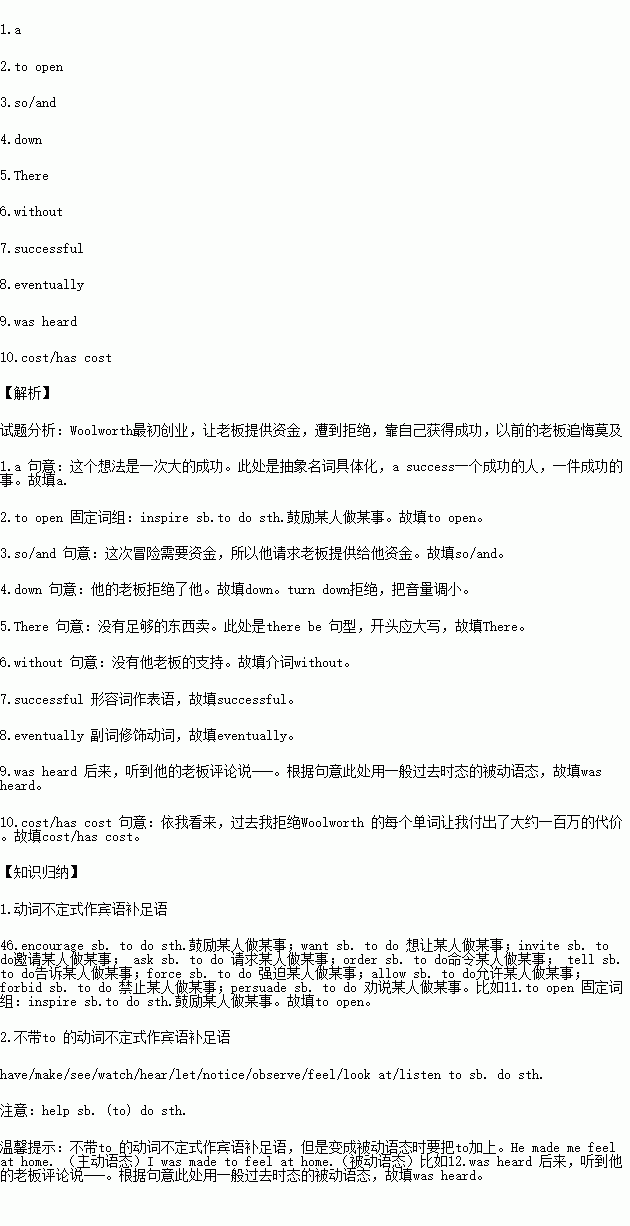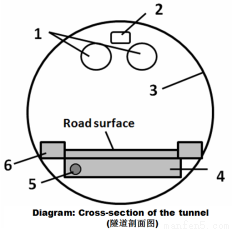题目内容
阅读下面材料,在空白处填入适当的内容(1个单词)或括号内单词的正确形式。
When young F.W. Woolworth was a store clerk, he tried to convince his boss to have a ten-cent sale to reduce inventory(存货). The boss agreed, and the idea was1. great success. This inspired Woolworth 2. (open) his own store and price the items at a nickel and a dime (角). He needed capital for such a venture,3. he asked his boss to supply the capital for part interest in the store. His boss turned him 4. directly.“The idea is too risky,” he told Woolworth.“5. are not enough items to sell for five and ten cents.”
Woolworth went ahead 6. his boss' support. But he not only was7. _ (success) in his first store, but8. (eventual) owned a chain of F.W. Woolworth stores across the nation. Later, his former boss 9. (hear) to remark,“As far as I can figure out, every word I used to turn Woolworth down 10. (cost) me about a million dollars.”


 other currently on the road. It rolls on four wheels, but its body and chassis(底盘) weren’t built in a factory. Instead, Strati’s designers used a technology called 3-D printing. It created those parts of the car in one piece, from the ground up.
other currently on the road. It rolls on four wheels, but its body and chassis(底盘) weren’t built in a factory. Instead, Strati’s designers used a technology called 3-D printing. It created those parts of the car in one piece, from the ground up. appen in the long term?”
appen in the long term?” 5?
5?